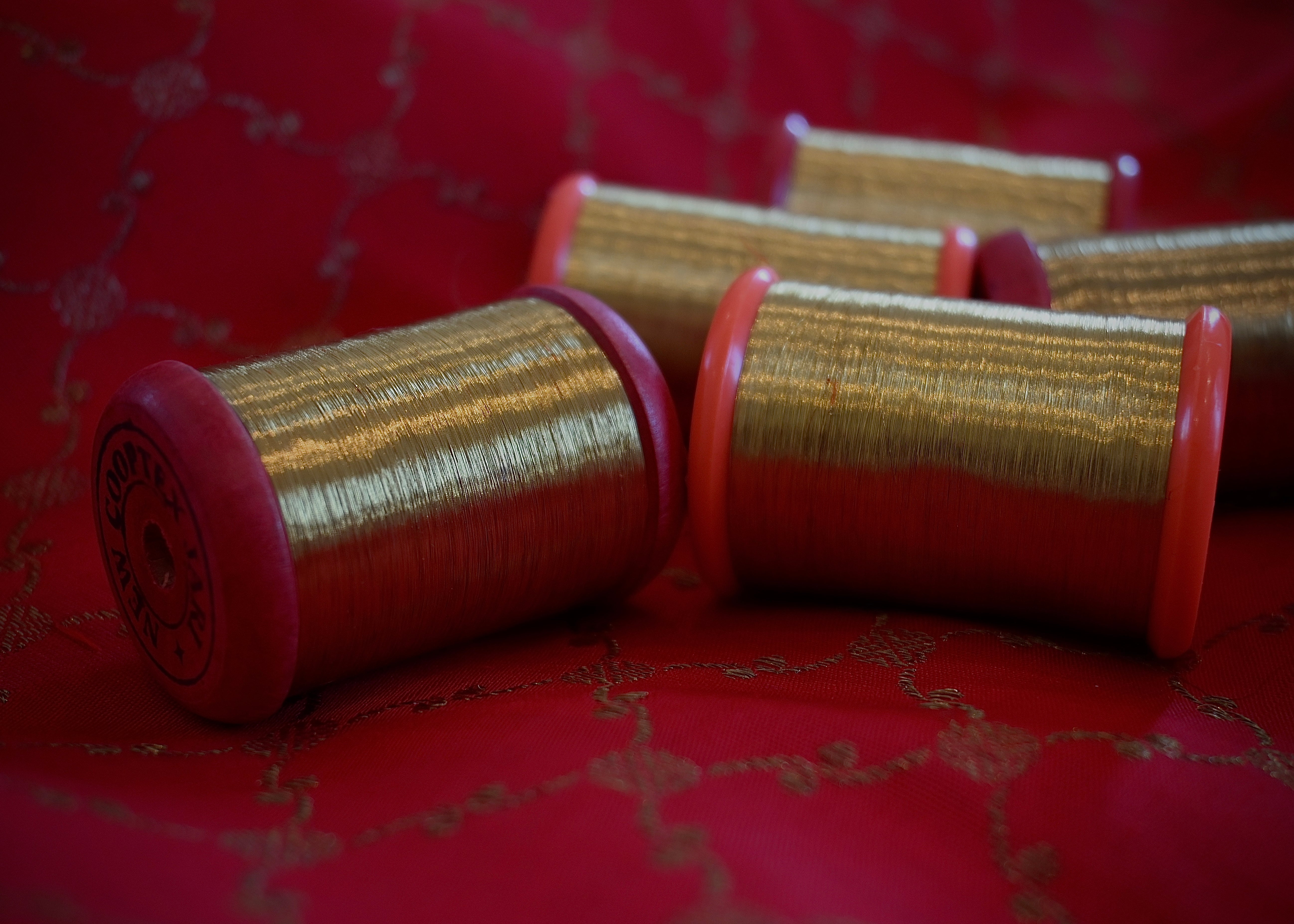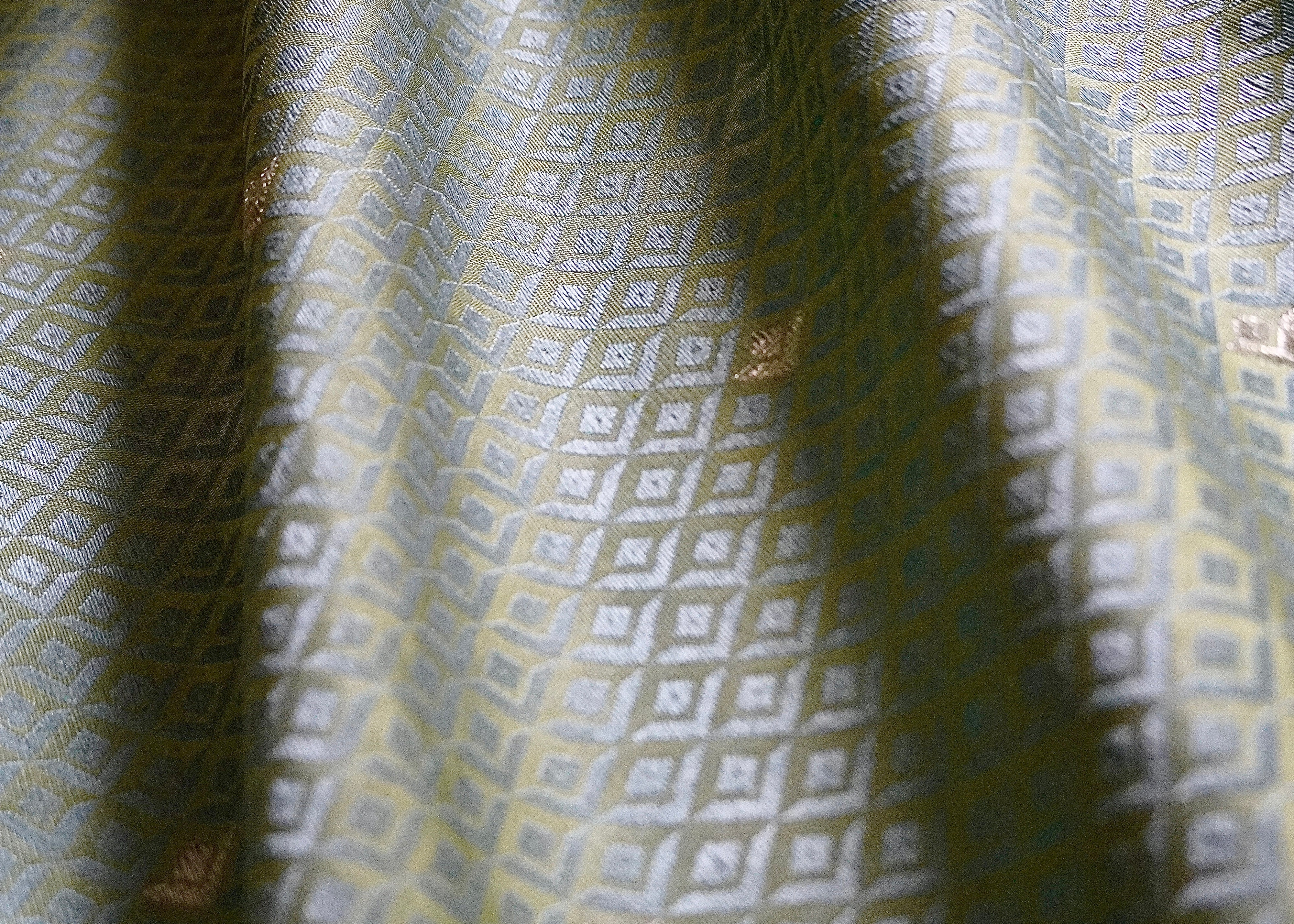
All The Glitters Is Not Gold - Parvai's Perspective To Real Zari
Zari Weaving Context
Made from pure silver & gold, Zari or gilded metal yarn, has played an important part in the history of Indian handwoven textiles. Zari is used to create elaborate and rich patterns on the loom adding both appeal & value to it. Zari originates from the Persian word 'zar', meaning gold and was made of pure silver gilded with gold. Until a century ago, textiles woven in pure metallic yarns made of real gold & silver were an intrinsic part of India's hand-weaving culture. The art of gold and silver wire-making dates back to the Vedic period, making this craft almost 3000-4000 years old. Zari was initially used in sacred symbolism and to hand-weave fabrics for the aristocracy and the mercantile elite. Zari work is the epitome of elegance and has always been associated with the royal personas in India. It is one of the most famous and elaborate metal weaving and embroidery techniques. 
Parvai's Understanding of Zari weaving in Kanchipuram
Kanchipuram silk saree weaving, a highly skilled craft, is valued as one of the finest examples of hand-crafted textiles worldwide. These sarees are hand-woven with mulberry silk. After careful extraction, the silk yarn is dyed in the richest of colours and woven with zari threads. The silk is sourced from Karnataka while the pure gold & silver zari are from Surat, Gujarat. Pure 5-gram zari is also manufactured locally by Tamil Nadu Zari Limited, a public-sector undertaking predominantly for the Weavers Cooperative Societies of Kanchipuram. The zari threads that give life to the prized Kanchipuram saris contain a government-mandated amount of pure silver and gold. While the geographical indicator for this weave mentions many unique features, it is the purity of the zari & silk that makes these saris highly valued & sought after. In fact, this factor has remained a key for the continued patronage of this weave. While the government of Tamil Nadu allows the manufacture of silk saris on powerloom, pure zari & silk saris are only allowed to be woven on handloom. 
The saris woven in Kanchipuram were not only prized for their beauty but also for their practicality. As family heirlooms, they could be worn and passed down from mother to daughter, and in times of need, they could be sold or pawned for their considerable resale value. Even today, it is not uncommon for women from Tamil Nadu to possess their heirloom Kanchipuram saris that are over 50 years. This sustainable practice of reusing and recycling textiles has been a part of Indian culture long before it became a global trend.
The Kanchipuram Zari

Zari is sold in MARC, with each marc weighing approximately 240 grams. It is said that almost all of the zari produced was made of pure gold or silver at some point in time. However, as the price of these precious metals skyrocketed, silver alloys were used instead and electroplated with gold to create zari yarns. As a result, the composition of silver and gold in zari declined as prices rose. Till two decades ago, pure zari would contain nearly 50% silver and 6-8% gold. These saris held considerable resale value, and the precious metals could be extracted and sold. In the ancient days, some saris even used up to 10-15g of gold. Today, real zari is said to be composed of 55-57% silver, 22-24% silk, 0.59-0.60% gold, and 20-22% copper.
The composition of zari may not matter to some buyers. However, for those who value certain aspects of zari, the reasons to choose one type over another are vary. For example, some may choose pure zari for its high resale value, while others may want to own something premium and luxurious. For others, like those participating in religious ceremonies, pure silk & zari fabrics symbolise purity and are hence chosen for special occasions such as weddings.

Relevance of Zari Composition Today
We believe an heirloom sari is a culmination of many factors. The usage of high-quality silk or cotton yarn, dye, zari and craftsmanship come together to produce an heirloom sari. Higher zari purity might add to the cost of a sari & make it a premium product but it does not make a sari an heirloom. And should a patron wish to enjoy a weave while choosing a lower grade of zari, we feel it is their decision to make. Patronage has always been the most powerful factor that has influenced the way handloom has evolved. And we firmly believe the makers of craft will always follow the powerful voice of the patron.

The relevance of real zari has changed over time. Historically, it was relevant when clothes were prized family heirlooms passed down from generation to generation and sold when they were no longer wearable. In museums across the globe, most of the textiles on display do feature real zari saris with superior craftsmanship. Real zari usage automatically assured patrons of better quality. Today, the reasons why a patron may choose real zari are minimal. One of the key factors would be the assurance of craftsmanship. However, at Parvai, we believe it is possible to produce well-woven fabrics using 1g, 3g, and even tested zari. Ultimately, it is up to the patron to decide which zari grade would work best for their use.
Parvai's Perspective on Kanchipuram Zari
Parvai, an organization that creates high-quality fabrics, has always believed in using the best possible materials and craftsmanship to create products that can qualify as heirlooms. While high-quality zari has always been a part of their fabrics, a recent interaction with a patron made them reconsider their approach. In response, Parvai has decided to weave saris in different zari grades, offering 5gm real zari saris, and other zari varieties upon request. The craftsmanship of all saris will be similar, but the mere zari usage may vary the value of the sari. For some special projects, they will continue to use 5gm zari.
Our Projects With Different Zari Grades


At Parvai, we endeavor to question, learn & improve every aspect of weaving. Our curiosity to zari driven no doubt by our conversations with patrons led us on a quest to review how we look at zari. We understand many of these jargons can be confusing & overwhelming to a customer, however, we sincerely hope, the information we have shared above helps our patrons make a better choice. Overall, the use of zari in Indian clothing is a rich tradition that continues to evolve, adapting to changing times and customer needs.
Foot Note:
The views & persperctives expressed in this article belong exclusively to Parvai and does not necessarily reflect those of other brands, companies or institutions. The information shared in this article is a product of extensive research and ground work done on the subject and is suject to copyright laws.
References:
- https://www.tn.gov.in/hhtk/dht/zari/zari-home.htm
- https://www.oldzari.com/blogs/much-needed-information-on-selling-sarees
- https://economictimes.indiatimes.com/industry/cons-products/garments-/-textiles/government-eases-norms-for-gold-silver-mix-in-kanchipuram-sarees/articleshow/11262276.cms?from=mdr




1 comment
Thank you Parvai !!
Very detailed and information blog.. This has addressed lot of my questions related to Zari, much appreciated and kudos to your team to bring such awarness
Vidhya
Leave a comment
This site is protected by hCaptcha and the hCaptcha Privacy Policy and Terms of Service apply.